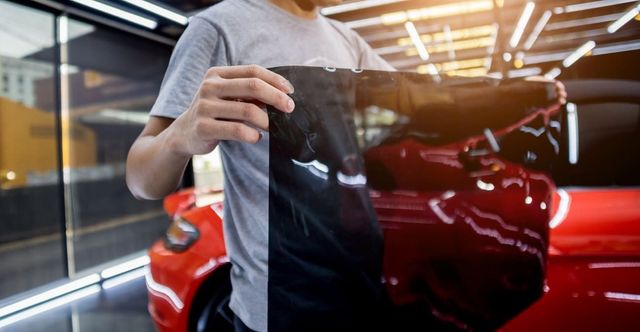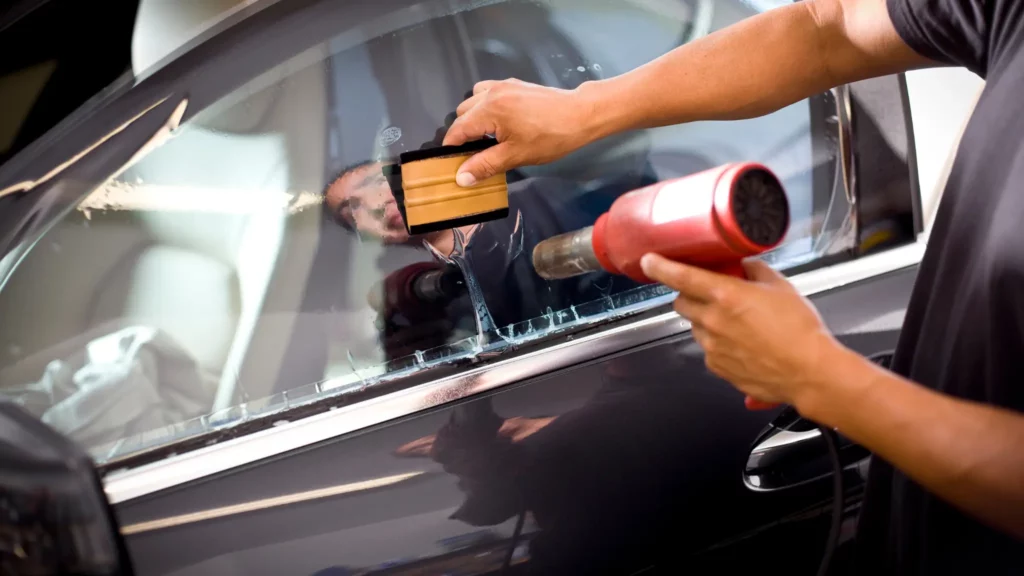Comprehending the Different Kinds of window tinting Available for Cars
Comprehending the Different Kinds of window tinting Available for Cars
Blog Article
Essential Factors to Take Into Consideration When Finding Home Window Tint for Your Automobile
Choosing the right home window tint for your automobile entails a careful analysis of a number of essential variables that can considerably impact both validity and capability. Comprehending local regulations pertaining to Noticeable Light Transmission (VLT) is extremely important to stay clear of prospective fines. The option of home window colors differs extensively, encompassing choices that offer differing levels of UV defense and warmth rejection, each with unique advantages. Furthermore, the selection in between professional setup and DIY methods can affect both expense and quality. Each of these elements plays an essential function, but there are still factors to consider that may amaze you.
Lawful Rules and Restrictions

For instance, some states allow darker colors for back windows while imposing more stringent limits on front home windows. Additionally, guidelines may determine details colors or products that can be made use of, forbiding reflective or metal colors in specific cases.
It is necessary to consider not just the aesthetic desires yet also the performance and security ramifications of home window tinting. Prior to installation, lorry owners should familiarize themselves with their regional regulations, which can frequently be discovered on state transportation websites or through regional law enforcement firms.
Sorts Of Window Color
Window color comes in numerous types, each created to satisfy different needs and preferences. The most usual kinds consist of colored, metalized, ceramic, and crossbreed tints.
Colored home window color is prominent for its aesthetic allure, giving an uniform appearance while lowering glare. It uses minimal warm denial and might discolor over time. Metalized tint, on the other hand, integrates metal fragments that mirror heat and UV rays, enhancing durability and giving remarkable performance. This type can hinder electronic signals, which is a crucial consideration for those that rely on GPS or cell reception.
Ceramic home window tint is a costs alternative, providing excellent heat being rejected and UV defense without compromising exposure. Its non-metallic building and construction makes sure that it does not interfere with electronic signals, making it an optimal selection for state-of-the-art vehicles. Crossbreed tints incorporate the advantages of dyed and metalized films, providing an equilibrium of aesthetic appeals and performance.
When selecting a home window tint, it's essential to take into consideration each kind's qualities and how they align with your particular demands for privacy, warm denial, and visual appeals.
UV Defense and Warm Being Rejected
A substantial element to consider in window color selection is the level of UV protection and warmth rejection it supplies. Ultraviolet (UV) rays from the sunlight can contribute to skin damages and increase the fading of an automobile's interior. Selecting a home find window color that offers high UV protection is necessary for protecting both occupants and the car's materials. Several high quality tints can obstruct as much as 99% of dangerous UV rays, considerably reducing prospective health threats.
In addition to UV protection, warmth denial is one more important aspect. Colors furnished with advanced innovation can reflect and take in solar power, keeping the automobile cooler and minimizing reliance on a/c. window tinting. This not just boosts comfort yet can additionally bring about boosted fuel efficiency, especially in hot climates
When examining various color alternatives, look for those with a high Noticeable Light Transmission (VLT) percentage while keeping effective UV and infrared heat denial capabilities. Products that meet these criteria frequently show exceptional top quality and efficiency, making sure that your vehicle remains a risk-free and comfy setting. Inevitably, purchasing reputable window color that excels in UV protection and warmth rejection will produce long-lasting benefits for both health and automobile upkeep.
Installment Approaches and Expenses
Picking the right home window color includes not only comprehending its safety features but also thinking about the installment methods and associated expenses. Expert setup normally assures a high-quality coating, as knowledgeable technicians make certain that the tint is applied smoothly without bubbles or blemishes.
On the various other hand, DIY packages are offered at a reduced rate factor, usually in between $50 and $150. Nonetheless, they call for a particular degree of skill and patience, as improper application investigate this site can result in unsatisfactory outcomes. It's vital to follow the maker's guidelines carefully and allow adequate time for installment
In addition, consider the prospective costs of removing or replacing improperly set up tint, which can rise quickly. Ultimately, selecting the most proper installment method pivots on balancing spending plan constraints with the need for top quality, sturdiness, and aesthetic charm of the home window color.
Upkeep and Durability
Proper maintenance is necessary for ensuring the longevity of your car's home window color. Normal cleaning and care can significantly impact the appearance and toughness of the tint - window tinting. It is recommended to wait at the very least a week after setup prior to cleaning up the windows to allow the glue to cure completely
When cleansing colored home windows, utilize a soft microfiber cloth and a gentle, ammonia-free cleaner. Harsh chemicals can weaken the tint, resulting in peeling off or discoloration. Stay clear of making use of abrasive materials, as they can damage the surface and jeopardize the color's stability.

Evaluate your window tint regularly for any kind of signs of damages, such as bubbling or staining. Early detection enables prompt fixings, preserving the tint's performance and visual allure. By sticking to these maintenance methods, you can boost the durability and aesthetic quality of your lorry's home window tint, guaranteeing it stays a appealing and useful function for years to come.
Final Thought
In verdict, choosing the appropriate home window tint for an automobile requires careful factor to consider of different aspects, consisting of lawful guidelines, types of color available, and the twin advantages of UV protection and warmth rejection. Regular maintenance is essential to guarantee the longevity of the color.
Choosing a window color that supplies high UV security is important for protecting both residents and the car's products. Eventually, investing in reliable home window tint that succeeds in UV security and warmth denial will certainly yield lasting benefits for both health and vehicle upkeep.
Proper maintenance is crucial for guaranteeing the durability of your car's see home window color. By sticking to these maintenance practices, you can boost the durability and visual quality of your vehicle's home window tint, guaranteeing it remains a practical and appealing function for years to come.
In conclusion, picking the ideal window tint for a lorry demands careful factor to consider of various elements, consisting of legal regulations, types of tint offered, and the twin advantages of UV protection and warmth rejection.
Report this page